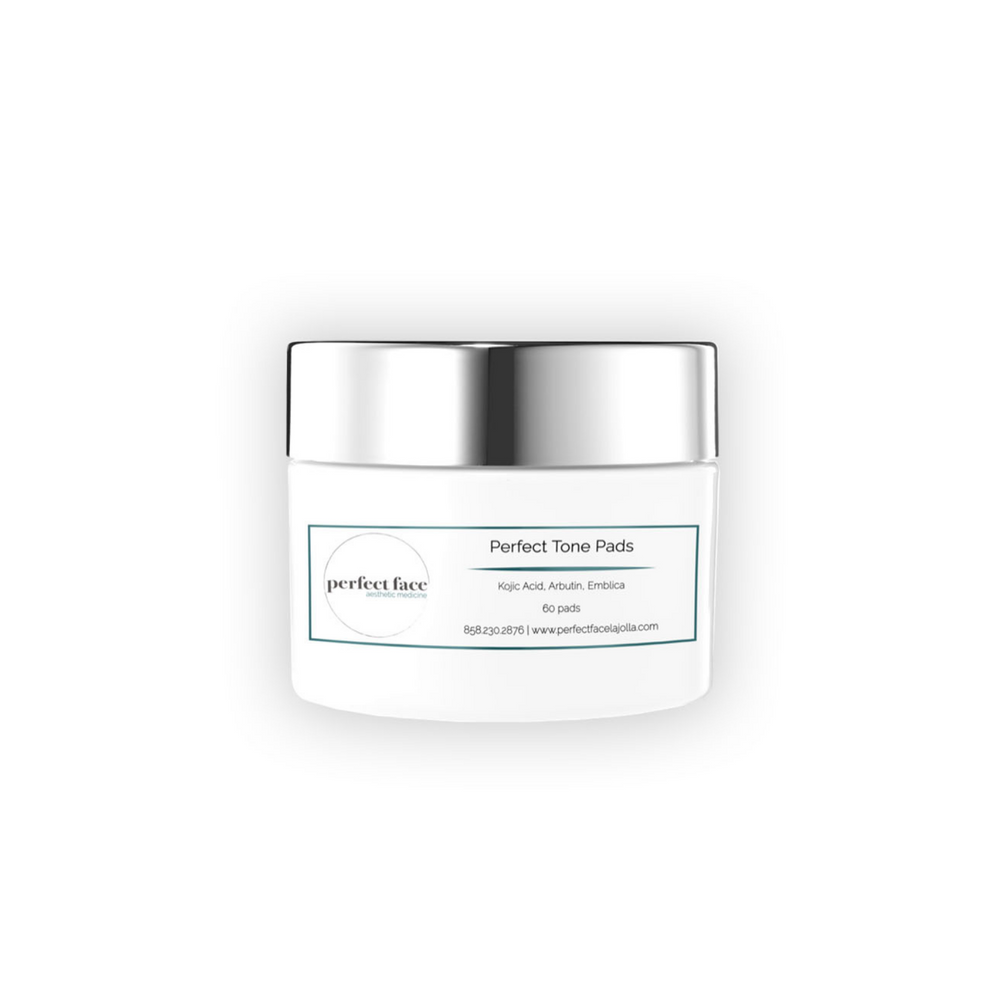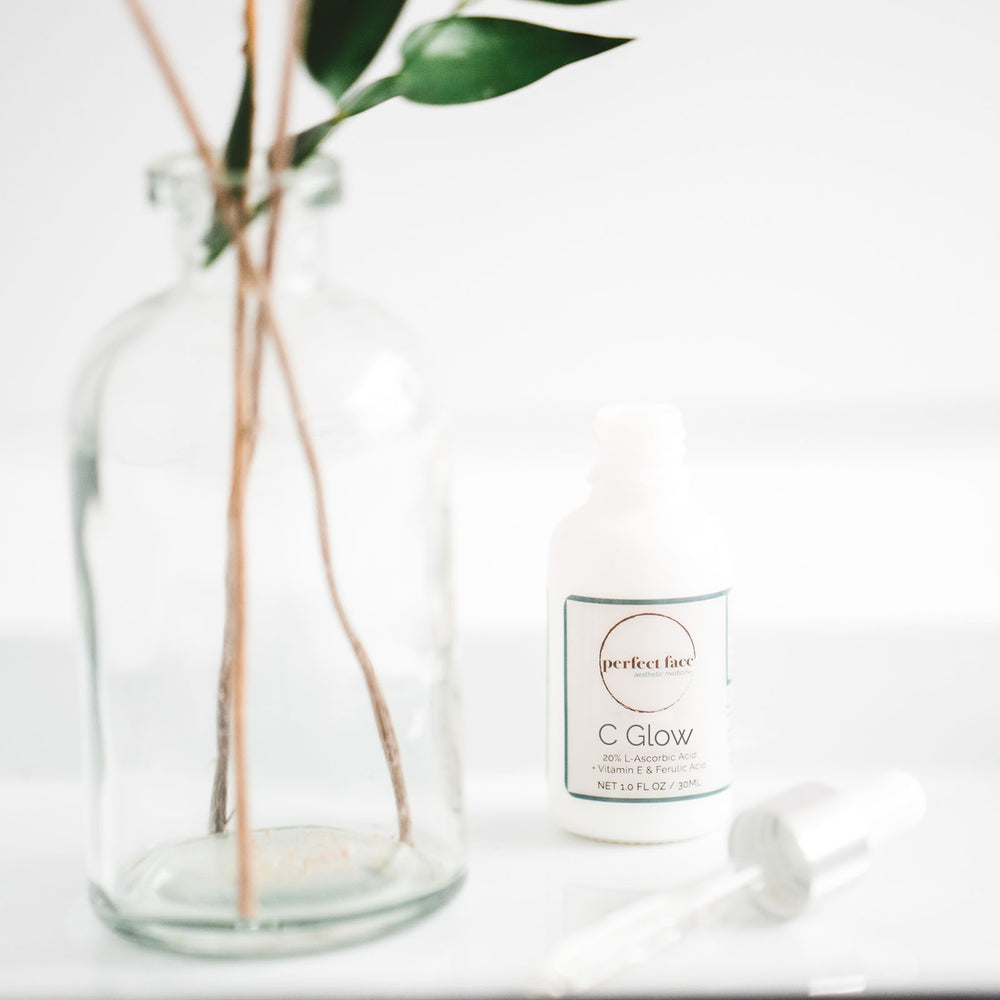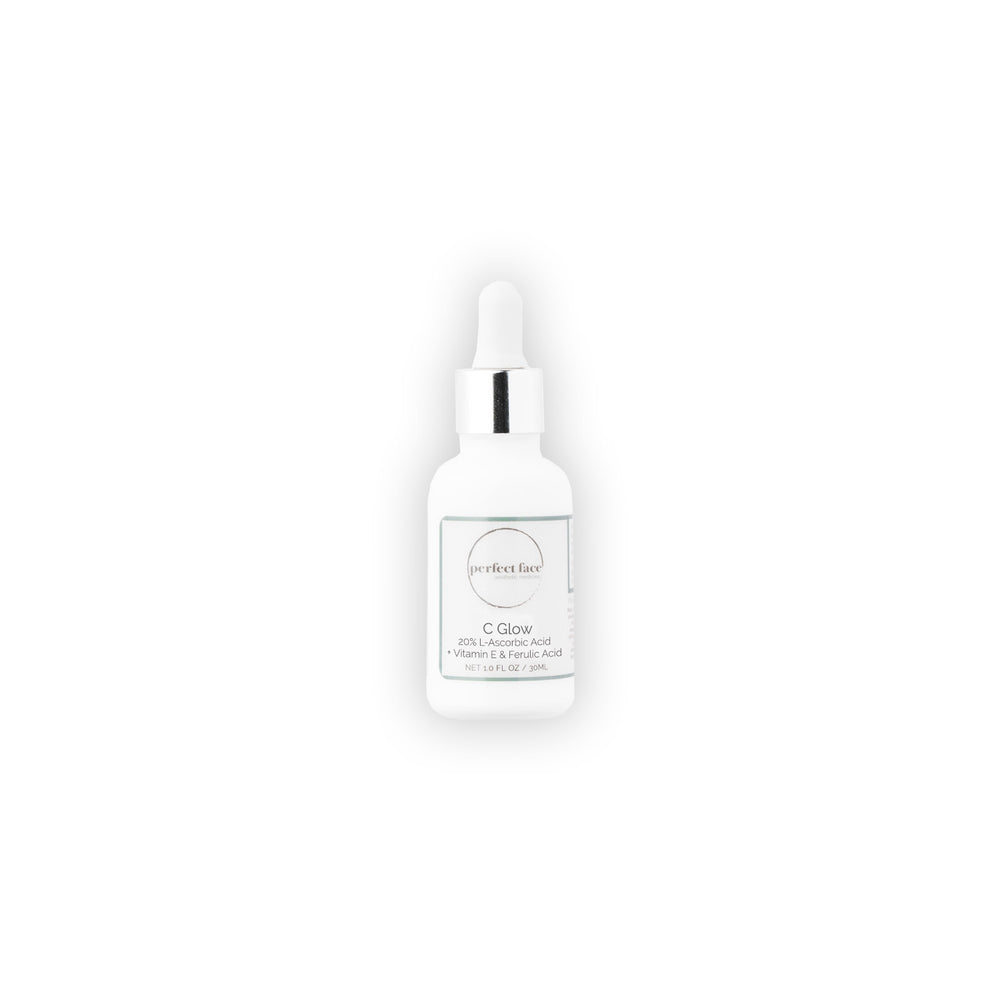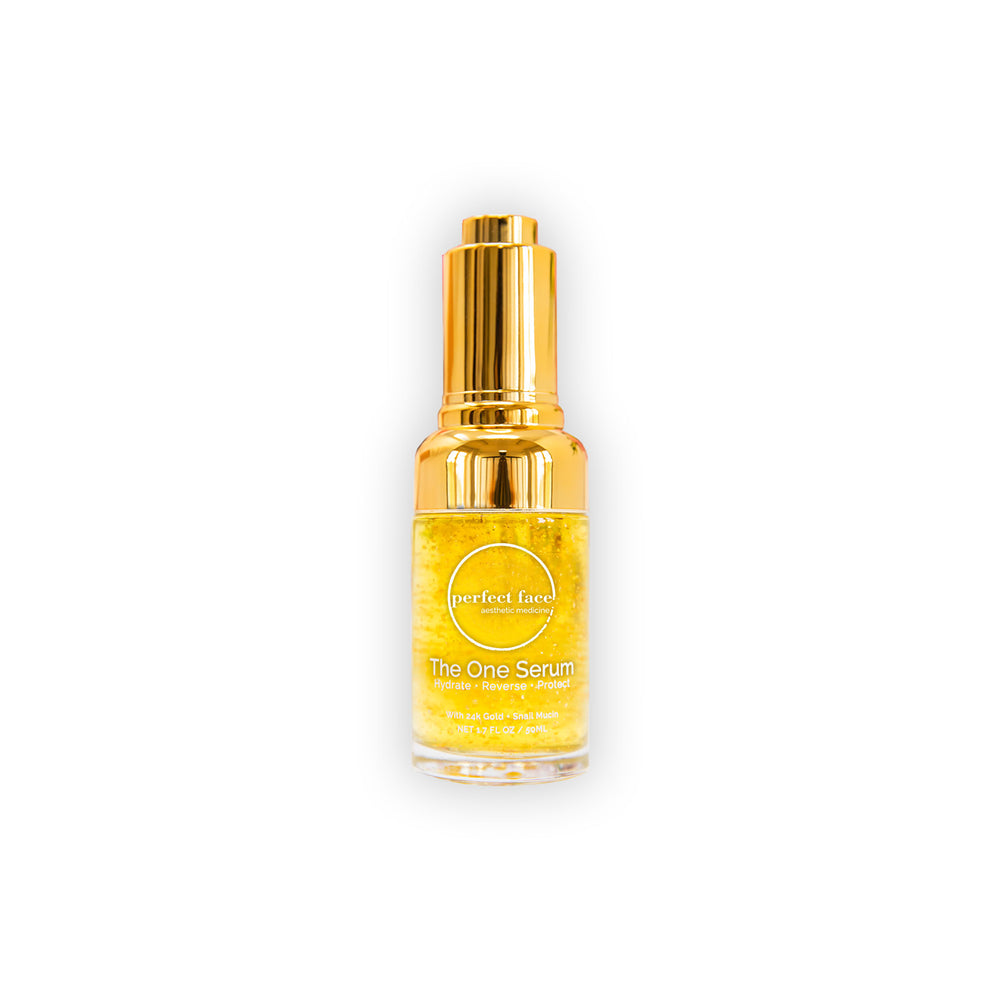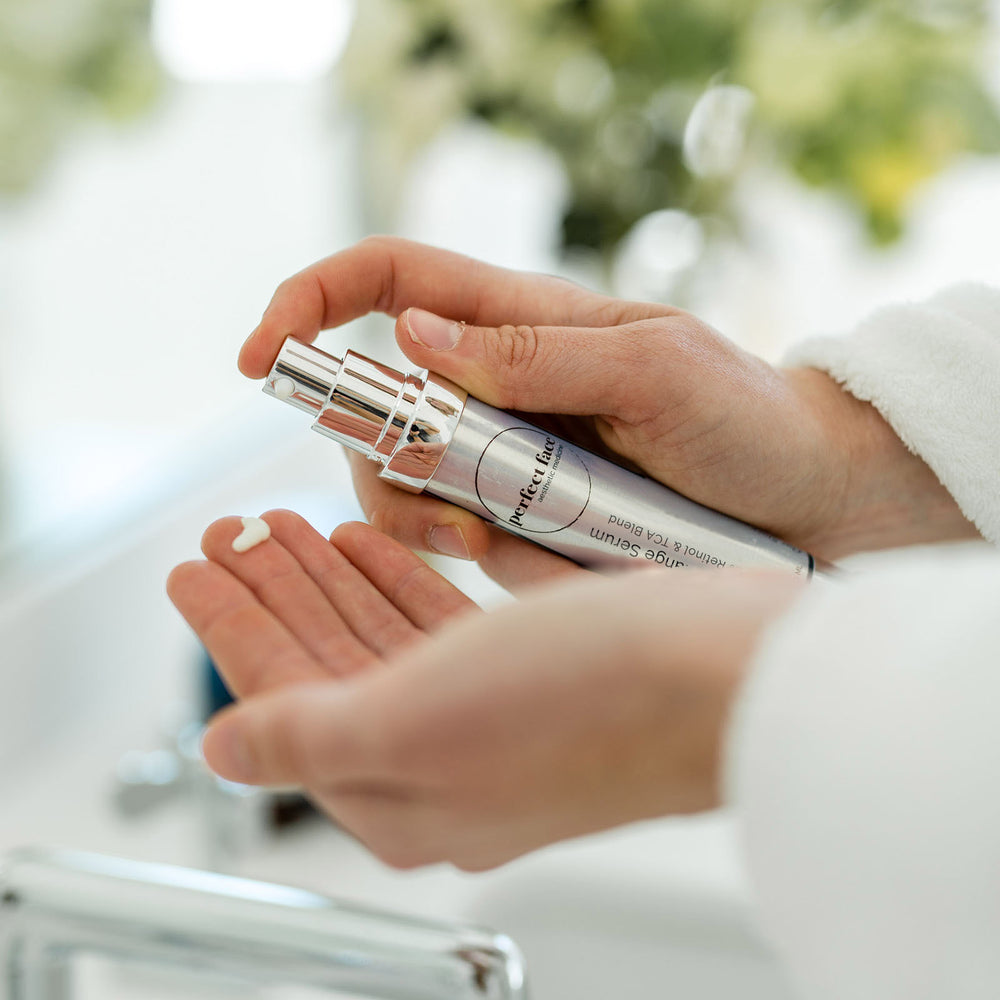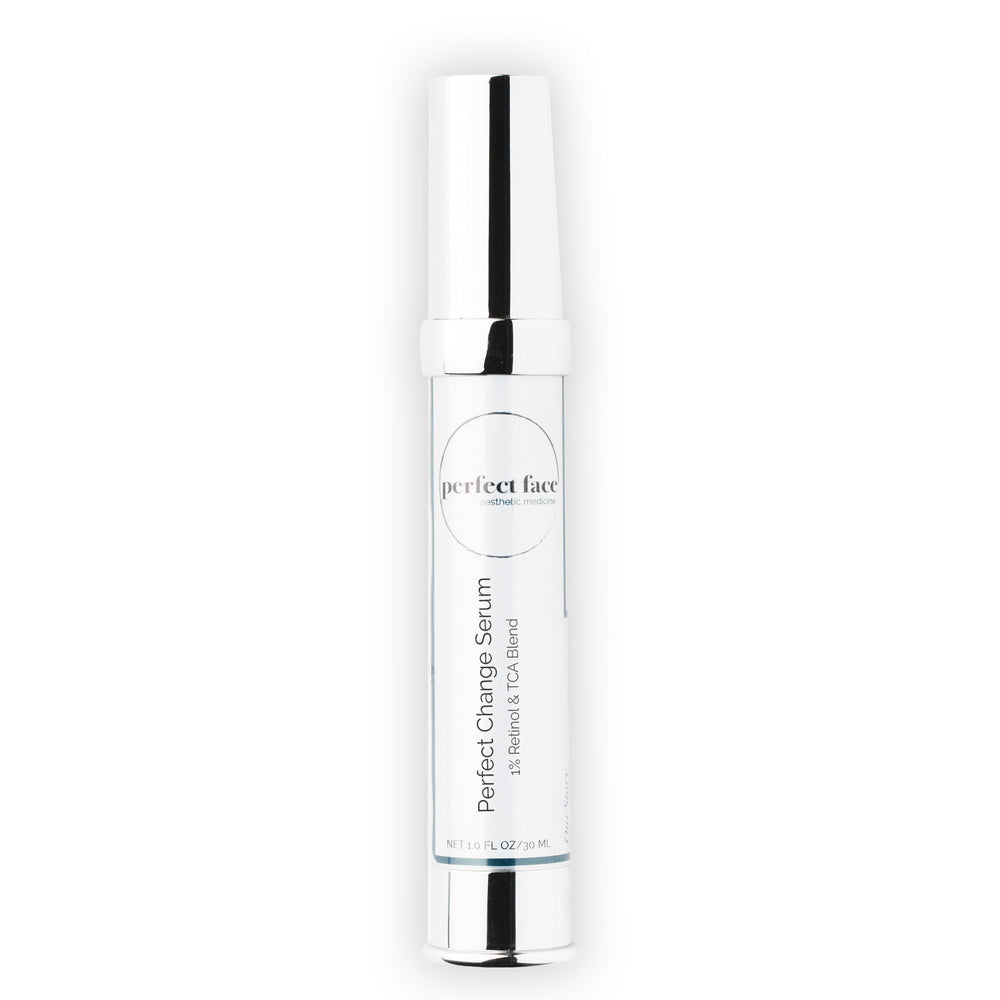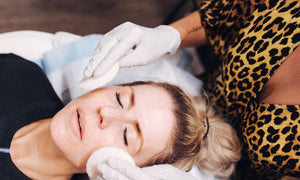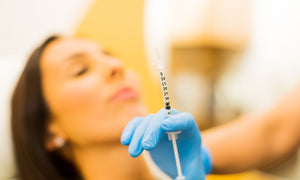As a mama of two, I’ve always been honest with my PFAMily: I’ve suffered from melasma from pregnancy.
And...I know my PFAMily has too.
According to the Dermal Institute, this skin condition affects more than five million Americans, 90% of them being women.
Melasma is a stubborn condition that should be treated on an individual basis since each case can be so different. But I do have specific recommendations for potent topical skincare, in-office treatments, and preventative steps that have successfully helped many clients with their melasma.
What Is Melasma?
The American Academy of Dermatology defines melasma as a pigmentary condition that causes gray-brown patches, usually on the cheeks, bridge of the nose, forehead, chin and above the upper lip (a.k.a. the “melasma mustache”). While we often see melasma on the face, melasma can also appear on other parts of the body that are exposed to the sun, like the forearms and neck.
Melasma does not cause any symptoms that you feel, but it can change the way your skin looks (and maybe your confidence levels too!).
What Causes Melasma? Can You Get Melasma From Pregnancy?
Melasma can be caused by a combination of factors, including: sun exposure, hormones and genetics.
Much like other forms of hyperpigmentation, melasma is exacerbated by exposure to the sun. Ultraviolet (UV) light from the sun stimulates melanocytes (color-producing cells in the skin) to produce too much pigment, resulting in gray-brown patches on the face. Melasma is often worse in the summer, when we spend more time outside in the sun.
In addition to (and sometimes, independent of) sun exposure, hormones seem to trigger melasma. Up to 70% of pregnant women suffer with melasma from pregnancy, and the condition is sometimes referred to as the “mask of pregnancy.” Hormonal contraceptives and other hormone therapies can also instigate melasma. I had a FULL mask of melasma from pregnancy with my first baby, Arrow. You can see my melasma pictures and melasma mustache below.
Melasma Mustache and My First Baby

Finally, people with darker skin (such as those with Latin/Hispanic, African-American, Asian, Indian or Middle Eastern descent) are more likely to get melasma as they have more active melanocytes than people with lighter skin. People who have a blood relative who had melasma are also more likely to get melasma. Who knew!
How to Treat Melasma
Melasma is difficult to treat (and often depends on severity), but there are ways to tackle this stubborn pigmentary condition.
At-Home Treatments
It’s important to treat melasma with a tailored medical-grade skincare regimen that combines multiple brightening actives recommended by the National Institutes of Health, like vitamin C, vitamin E, arbutin, kojic acid and glycolic acid, to subdue the overactive pigment cells and eliminate the excess pigment that is already in the skin. Keep in mind, once you start seeing positive progress with your skin, that is not the time to ease up on your lineup. Persistence with these key ingredients is crucial for long-term results and to prevent return of hyperpigmentation.
I recommend a trifecta of products (used over the course of at least three months) to treat melasma (and help keep it at bay).
Skincare Lineup for Melasma on the Face

Perfect Tone Pads
Perfect Tone Pads contain the most effective botanical skin brightening agents, including kojic acid, arbutin, and bearberry. These pads can be compounded in the office with prescription hydroquinone - the #1 recommended treatment option for melasma.
C Glow OR The One
C Glow and The One are two very different serums. Both have properties that are amazing in treating melasma on the face, neck and arms, but both are not necessarily needed in this trifecta of products!
Let’s start with C Glow. This potent, vitamin-rich serum helps lighten the skin and treats uneven pigmentation. C Glow is a high concentration L-ascorbic acid (20%) serum. In addition to its ability to increase collagen levels in our skin, L-ascorbic acid inhibits an enzyme called tyrosine from converting into melanin (the pigment that darkens the skin). The result is brighter and more evenly toned skin. C Glow also contains vitamin E and ferulic acid which work together with vitamin C to enhance its antioxidant potential. I’ve actually written an entire blog post on why it’s vitamin C’s world and we are all just living in it!
An alternative to C Glow, The One is a “do it all” serum with all the antioxidant properties of C Glow, plus a whole lot more. The One has what I call “gentle resurfacing power.” It increases cell turnover and collagen production, but it does so by deeply hydrating and balancing the skin with naturally occurring hyaluronic and glycolic acids. This makes The One perfect for supporting more powerful resurfacing products and services. And although The One isn’t the most active option for lifting melasma on face, it’s hugely beneficial in preventing melasma thanks to its anti-inflammatory qualities. Inflammation is often a key contributing factor to melasma and The One is ideal for keeping the skin calm, comfortable, and nourished. See why we call her The One?
Whichever serum you choose, trust me you’re in good hands!
Perfect Change Serum’s powerful combination of retinol and TCA helps rejuvenate and lighten uneven skin. The serum contains TCA, a chemical peel ingredient that encourages resurfacing of the skin and can help treat melasma on face, neck and arms. The benefits of retinol are well known and plentiful. Improving uneven pigmentation whether from melasma or sun damage is only one of this ingredient’s well studied effects.
Before and After Melasma Pictures

This client of mine had incredible success in treating her stubborn melasma. These melasma pictures were taken a few months after use of the aforementioned products ONLY. There were no in-office treatments performed. She has been able to maintain her results one year later with her PFAM lineup and vigilant SPF protection.
In addition to our trifecta of active topical skincare, we also have the option of an at-home depigmentation peel called Cosmelan MD, thanks to our ability to consult virtually!
Cosmelan MD Depigmentation Peel
This three-month treatment is based on the inhibition of tyrosinase, a basic enzyme in the melanin formation process. The treatment has a peeling effect that ultimately eliminates melanin patches from melasma on the face. The end result is a refined skin texture and tone. It’s incredibly effective on ethnic skin too, which is rare among the majority of lightening skin treatments! The Cosmelan MD treatment consists of two parts, both of which can be done from home. First a leave on mask is applied and worn for about 8 hours. Then a daily maintenance protocol is begun using additional Cosmelan products.
We do require a virtual consultation to ensure you are a good fit for this treatment option, but we do ship anywhere in the U.S. If you’re local, you always have the option of coming into the office to talk about this treatment. If we decide it's a good fit for your skin and your goals, we can apply the mask in the office for you, with the rest of the treatment still completed at home.
Recently I had the pleasure of working with lifestyle influencer Angela Jones who captured her entire Cosmelan journey to share with you. Check out her blog, which includes melasma pictures and a video diary of her progress! We also created a wonderful lineup of products to maintain Angela’s Cosmelan results now that she has completed the treatment protocol. This lineup is great for preventing melasma’s return AND for treating existing melasma.
Before and After Melasma Pictures

In-Office Treatments
In-office treatments for melasma can serve as a strong jumpstart on your journey to glowing skin. They can also be a tool for maintenance or of course, an amazing compliment to your at-home treatments. New procedures for melasma from our melasma treatment collection include:
- Melanostop Depigmentation System: This minimally invasive add-on to our very popular microneedling treatment attacks pigment from multiple pathways through the use of tranexamic acid. This solution reduces the excessive vascularization that characterizes melasma, acts on the inflammatory process that occurs after acne and scarring, and regulates the production of tyrosinase, which helps form melanin. For maximum benefit and optimal results, at least three treatments are recommended.
- Platelet-Rich Plasma + Microneedling (aka Vampire Facial): New research published in the Annals of Dermatology has also demonstrated the effectiveness of platelet-rich plasma (PRP) treatments in the reduction of melasma. PRP treatments utilize your blood’s platelets, which are loaded with growth factors that initiate the healing process in the body. One of the growth factors released from platelets has been shown to have a dose dependent effect on inhibiting the enzyme that creates melanin, therefore decreasing melasma. PRP treatments can also increase skin volume and tone, resulting in more ‘glowing skin,’ countering the effects of melasma.
Treatments may need to be repeated to maintain optimal long-term results and maximum effect. And again, active skincare like Angela's curated melasma maintenance lineup can help you sustain your glow and keep melasma at bay!
How Do I Treat Melasma?

How to Prevent Melasma?
According to the American Academy of Dermatology, one of the most common and effective treatments for melasma is sun protection. This means wearing sunscreen daily and reapplying every two hours (even if you’re just sitting by a window or the day is cloudy), as well as wearing a wide-brimmed hat and avoiding being in direct sunlight at its strongest points in the day. Just a small amount of sun exposure can make melasma return after it has faded! Imagine spending a year of your time, money and dedication on your melasma battle, only to have it completely ruined after one careless day in the sun. Don’t let this happen to you!
Acclaimed Director of Pigmentary Disorder and Multi-Ethnic Skin Clinic at Mass General Hospital, Dr. Arianne Kouroush has noted that melasma can be worsened by not only the sun’s rays, but also heat and visible light. This means that sunscreens that protect against skin cancer aren’t always enough to ward off melasma. So, even if you’re face is slathered in sunscreen and covered by a hat, but your legs are still hot in the sunlight, you may be at risk for triggering melasma.This principle also applies for hot yoga, steam rooms and even cooking. (Mind blown, right?!)
While it may seem impossibly tricky and incredibly stubborn, there is hope to treat this condition. Between brightening ingredients, skincare services and vigilant sun prevention, you can take on your melasma (and that stubborn melasma mustache)!
Best,
Dr. Zoe
Shop for Perfect Tone Pads, C Glow OR The One, and Perfect Change Serum - or book your service today.


